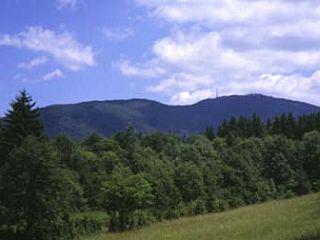
Slovenia is one of Europe’s more earthquake-prone countries, so it’s no surprise that it was here, in his homeland, where Ferdinand "Ferdo" Seidl built his reputation as an expert on earthquakes and their effect on buildings. But Seidl was a man of many interests; among other achievements, he helped to establish the study of geology in Slovenia, initiated the protection the country’s natural landscapes, and even called for fairer borders at the Paris Peace Conference.
Seidl was born in 1856 in the town of Novo Mesto, a quickly developing intellectual center, to a Czech father and a Slovenian mother. He was a bright student and he completed his studies at the University of Graz.
In the years that followed, he worked primarily as a geologist and developed a strong interest in earthquakes. He studied the 1895 earthquake that destroyed a large part of Ljubljana. In 1917, when another strong earthquake struck the Brežice area, Seidl examined its aftermath and published an extensive report, a rarity at the time.
The damage he saw in Brežice led him to devise several proposals for the construction of earthquake-proof buildings. Seidl was one of the world’s pioneers of such research.
His other passion, for botany, made him determined to protect Slovenia’s natural environment. Seidl’s love for the Gorjanci range, not far from his hometown, resulted in his proposal for the area to be protected. On his initiative, a large swathe of forest, as well as the Gospodična water spring, became the first nature reserves in Slovenia. A lover of nature in all its forms, Seidl was also involved in meteorology. In addition to writing several studies about weather in the Slovenian Lands, he set up the first weather station in the town of Krško, and later headed the weather observatory in Ljubljana. He even researched a possible link between climate and earthquakes.
Seidl was also active politically. In Austro-Hungarian times, he fought against the centralization of scientific research in Vienna. Then, in the aftermath of World War I, he used his reputation in the international scientific community to help his nation. Upset by the unfairness of the borders imposed by the victorious powers, he published a study calling for a fairer border between Italy and the newly created South Slav state, and he presented it at the 1919 Paris Peace conference. His plea was not successful, and a large part of the Slovenian Lands were annexed by Italy.
It wasn’t until 1945 that most of the disputed territories were returned to Yugoslavia. Seidl never got to see his dream come true, however. He died in 1942 at the age of 86.
Jaka Bartolj

































































